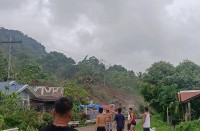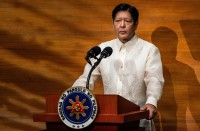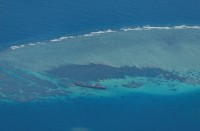Imposes ECQ in Cebu province, Cebu City, Davao City
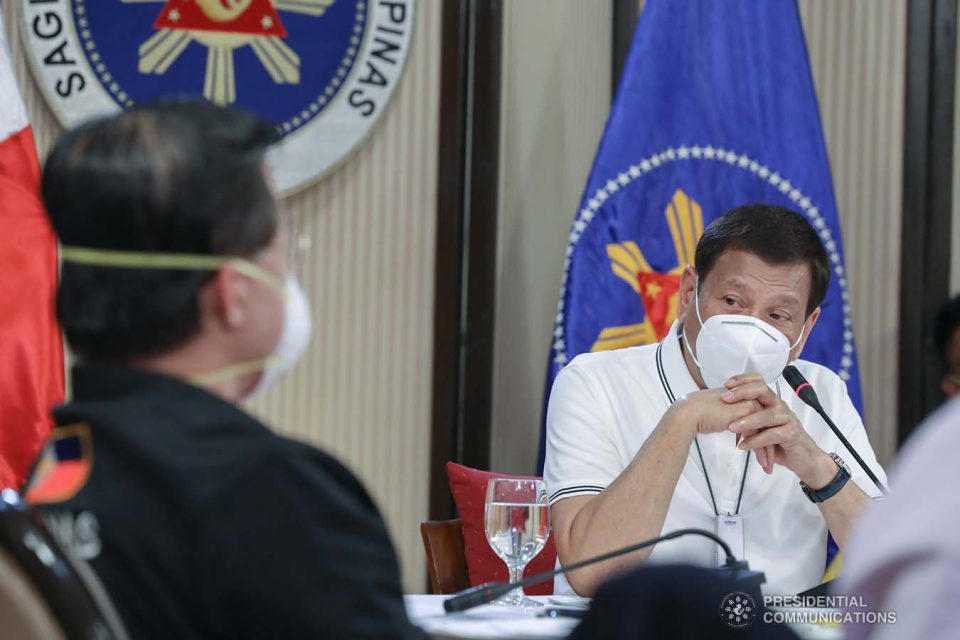
(Eagle News)– President Rodrigo Duterte has decided to extend the enhanced community quarantine until May 15 in Metro Manila, Central Luzon, Calabarzon, and other high risk areas in Luzon, and imposed the ECQ in other high-risk areas in Visayas and Mindanao with high incidence of COVID-19.
Duterte, upon the recommendation of the Inter-Agency Task Force on Emerging Infectious Diseases, extended the ECQ in the following areas:
• National Capital Region
• CALABARZON (Region 4-A)
• Central Luzon (Region 3)
and specifically in these provinces:
• Benguet
• Pangasinan
• Bataan
• Bulacan
• Nueva Ecija
• Pampanga
• Tarlac
• Zambales
• Batangas
• Laguna
• Cavite
• Rizal
• Quezon
• Oriental Mindoro
• Occidental Mindoro
• Albay
• Catanduanes
• Antique
• Iloilo
• Cebu
• Cebu City
• Davao Del Norte
• Davao City
• Davao de Oro
Some of the listed areas like Benquet, Antique, Pangasinan, Tarlac, Zambales, Iloilo, Cebu and Cebu City, and Davao de Oro would still be subject to rechecking until April 30, Presidential Spokesperson Harry Roque said.
On April 28, Malacanang released the final list of areas to be under ECQ from May 1 to May 15. These are the following:
-Metro Manila or the National Capital Region (NCR)
-Region 3 or Central Luzon, except the province of Aurora
-Region 4-A (CALABARZON)
-Pangasinan
-Benguet
-Baguio City
-Iloilo province
-Cebu province
-Cebu City; and
-Davao City
Roque said that this means that the other areas previously announced to be under ECQ would not be under the strict quarantine protocols but be placed under the so-called new normal or the general community quarantine (GCQ).
He stressed that the effectivity of the ECQ in the above-listed areas will be from May 1 to May 15. After May 15, they could transition into GCQ which will allow opening of certain businesses provided they follow strict quarantine procedures such as social distancing, proper handwashing and sanitation.
-GCQ, the new normal-
Other areas will be placed under the so-called General Community Quarantine or the “new normal” effective May 1.
“Ang lahat po ng mga probinsya na hindi po nakasama dito sa ECQ ay mapapasama sa new normal na tinatawag na ‘general community quarantine’,” Roque said.
The President’s new spokesperson announced this in a pre-recorded meeting of President Duterte with the members of the IATF on Thursday night, April 23, that was aired on Friday, April 24, 2020.
-Areas under evaluation for ECQ or GCQ-
He said that there will be continuous evaluation of other areas in the country if they will be under General Community Quarantine or if they should continue to be under ECQ or to be placed under ECQ if these are areas outside Luzon:
These are the following areas: Abra, Ilocos Norte, La Union Cagayan, Isabela, Nueva Vizcaya, Marinduque, Camarines Sur, Aklan, Capiz, Samar, Western Samar, Zamboanga del Sur, Lanao del Norte, Misamis Oriental, Misamis Occidental, North Cotabato, South Cotabato and Maguindanao.
-Low and moderate risk areas to be under GCQ-
Areas with low and moderate risk for COVID-19 will be placed under “General Community Quarantine.”
Those considered “moderate” risk areas are Negros Occidental, Negros Oriental, Siquijor, Davao del Sur, Davao Oriental, Sultan Kudarat, Lanao del Sur.
Those considered low risk areas are the following provinces: Apayao, Mt. Province, Ifugao, Kalinga, Ilocos Sur, Batanes, Quirino, Aurora, Palawan, Romblon, Sorsogon, Camarines Norte, Masbate, Guimaras, Bohol, Biliran, Eastern Samar, Leyte, Northern Samar, Southern Leyte, Zamboanga del Norte, Zamboanga Sibugay, Bukidnon, Camiguin, Davao Occidental, Sarangani, Agusan Del Sur, Dinagat Island, Surigao del Sur, Surigao del Norte, Agusal den Norte, Basilan and Sulu.
Low-risk areas will fall under general community quarantine until May 15, and if there is no deterioration, GCQ will be relaxed leading to normalization.
Roque said that there will be a reevaluation of all areas — both those under ECQ and GCQ — on May 16.
The IATF likewise recommended a minimum health standard to be implemented starting April 27. The Department of Health, the Department of Transportation, the Department of Trade and Industry, the Department of Labor and Employment and the Department of Public Works and Highways (DPWH) will prepare the guidelines by April 25.
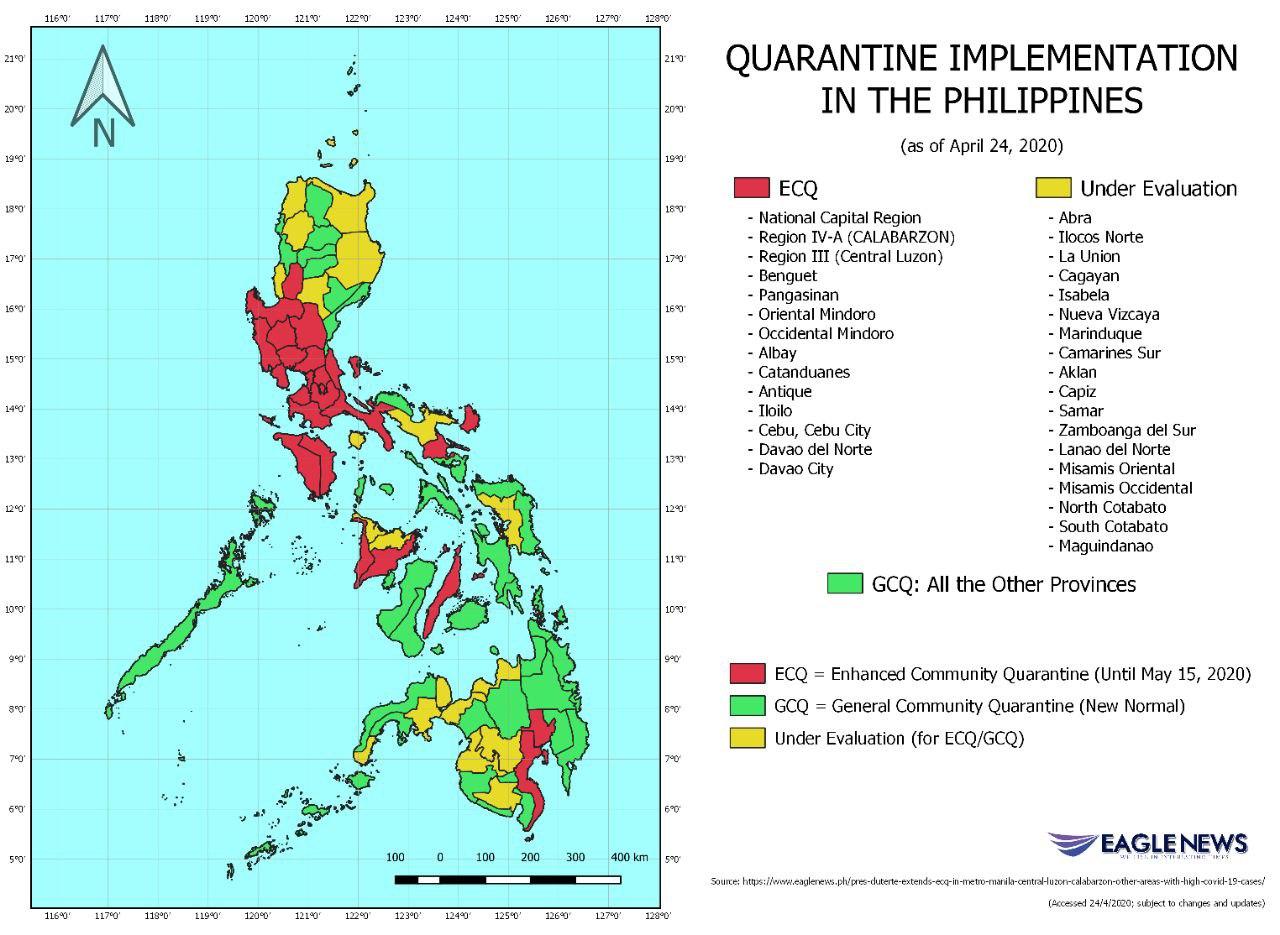
-What can be allowed under GCQ?-
Roque further detailed the IATF recommendation for areas under GCQ or “general community quarantine”. These are areas outside of the ECQ protocol, including those areas in Luzon previously under ECQ, but had been modified to be under “general community quarantine” based on the IATF recommendations.
Areas previously under ECQ but remain under GCQ will allow workers to go out and work in phases. Young people, senior citizens and high health risk would stay at home.
For GCQ areas, restricted mall opening covering non-leisure shops would be allowed. There will be mandatory temperature check, mandatory wearing of masks, mandatory alcohol use. Limited number of people, particularly those with age 21 to 59, with ID and not looking sickly, would be allowed to go inside.
Priority and essential construction projects would likewise be allowed to resume, subject to minimum health standards, physical distancing, and barracks for workers. Public transport modes would likewise be allowed to operate at reduced capacity. Local government units (LGUs) would enforce curfew at night for non-workers.
The decision on ECQ and GCQ were based on the risk of outbreak. Areas under ECQ would again undergo evaluation if the decision can be relaxed starting May 16, 2020.
(Eagle News Service)
(Editor’s note: Please refresh for updates. This is a developing story)


